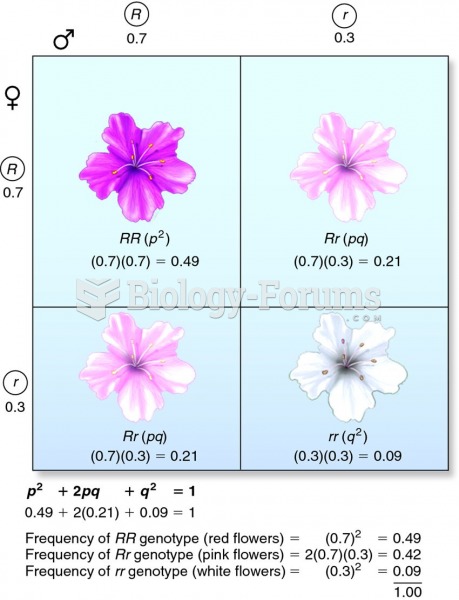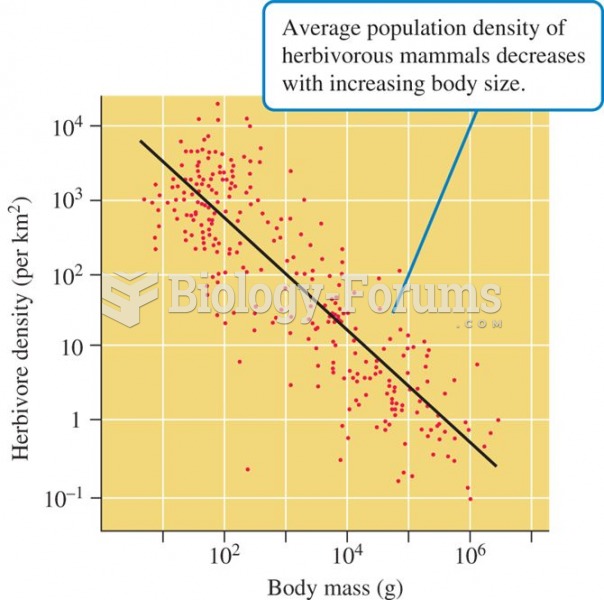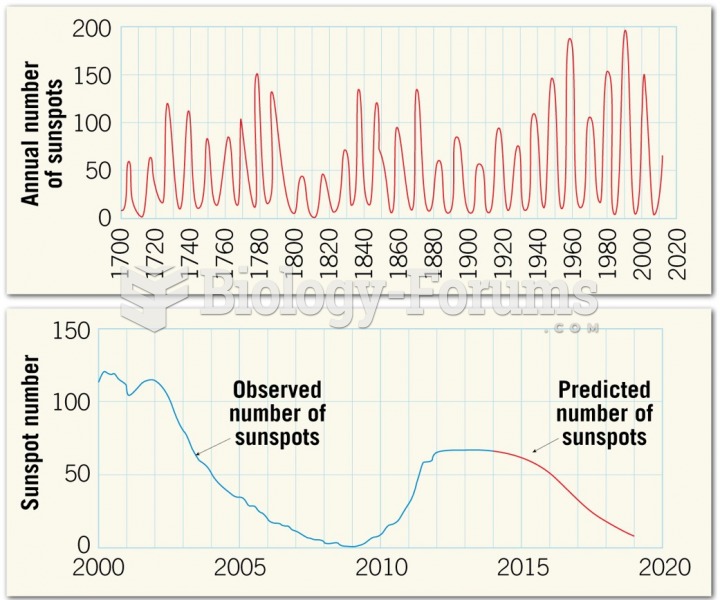|
|
|
To combat osteoporosis, changes in lifestyle and diet are recommended. At-risk patients should include 1,200 to 1,500 mg of calcium daily either via dietary means or with supplements.
In 1864, the first barbiturate (barbituric acid) was synthesized.
Chronic marijuana use can damage the white blood cells and reduce the immune system's ability to respond to disease by as much as 40%. Without a strong immune system, the body is vulnerable to all kinds of degenerative and infectious diseases.
The most destructive flu epidemic of all times in recorded history occurred in 1918, with approximately 20 million deaths worldwide.
Though the United States has largely rejected the metric system, it is used for currency, as in 100 pennies = 1 dollar. Previously, the British currency system was used, with measurements such as 12 pence to the shilling, and 20 shillings to the pound.
 Comparing allele and genotype frequencies in a population with the Hardy-Weinberg equation and a Pun
Comparing allele and genotype frequencies in a population with the Hardy-Weinberg equation and a Pun
 The tiger, Panthera tigris, was historically found throughout much of Asia, but at low population de
The tiger, Panthera tigris, was historically found throughout much of Asia, but at low population de





